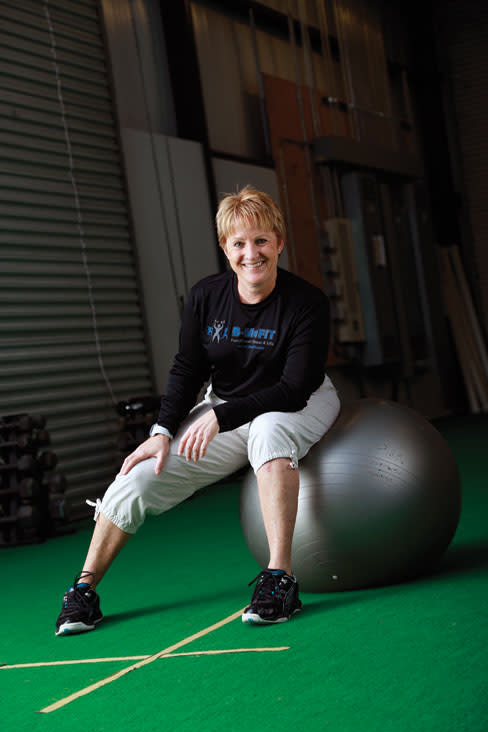Sarasota Health News: February 2014

Happy Valentine's Day Chocolate
Snack on a daily ounce or so of chocolate that’s at least 65 or 70 percent cacao (i.e., lower in fat and sugar than other chocolates), and reap the benefits of the magical cacao bean’s flavanoids and theobromine—and don’t forget to give some to your sweetie, too. After all, chocolate:
Increases good cholesterol while lowering bad cholesterol
Contains antioxidants that decrease cell damage
Widens blood vessels to lower blood pressure
How Well Do You Know Your Heart?
February is American Heart Month, and these two new heart tests (plus a third on the way) can help detect heart problems before it’s too late.
Corus CAD
This blood test, developed by genomic diagnostic company Cardio Dx, lets doctors look at your genes for indicators of heart disease. It highlights 23 genes that are involved in arteriosclerosis—affecting either how it develops or how your body responds to it. Because the test only requires drawing blood, Corus CAD presents less of a risk than other diagnostic tools like radiation imaging and can provide results in three days.
Hemoglobin A1c
Especially for those with diabetes, this blood test measures your glucose levels
over the previous three months, indicating how well you’ve been controlling your blood sugar levels. Lowering your A1c, especially immediately after being diagnosed with diabetes, can help lower your risk for coronary artery disease. Keeping the A1c level below 7 percent is usually the goal for those with diabetes; someone without diabetes will usually have a score around 5.6 percent or lower.
Plaque Scan
Not yet available to the public, this technology (also called CIMT, or Carotid Intima-Media Thickness Testing) measures the lining of the carotid artery, which is thicker in those with a higher risk of heart disease. While plaque is a big problem for your heart, by measuring the actual lining of the artery, the plaque scan can detect risk even before plaque builds there.
Matters of the Heart
Every day, 2,150 Americans die of cardiovascular disease.
30 percent of adults do not exercise.
20.5 percent of American men smoke; 15.9 percent of women smoke.
31.9 million adults have a cholesterol score higher than 240.
78 million adults have high blood pressure.
19.7 million adults have been diagnosed with diabetes.
Mazor Back Breakthrough
Doctors Hospital of Sarasota now offers a state-of-the-art, minimally invasive spine surgery technology. Mazor Robotics Renaissance uses a CT scan to create a three-dimensional mock-up of a patient’s spine, allowing surgeons to preplan their procedure. The Renaissance technology then uses that plan to guide surgeons through a precise surgery with pinpoint incisions that are accurate to 1.5 millimeters. The higher accuracy allows for fewer incisions and a faster recovery.
Break it Down--to Avoid Caregiver Breakdown
“Most caregivers are more capable of problem solving than they think they are,” says Sarasota-based occupational therapist Sally Thimm, who created SallyCares.com as a resource for caregivers and patients alike. The site covers topics from home management and medical information to social and spiritual support. Mutual frustration, she says, can be a major stumbling block for both the caregiver and the patient—the former may come to believe that the patient isn’t trying, while the latter believes the able-bodied caregiver is unaffected by the illness or disability.
One helpful technique is to establish small, realistic goals. To this end, Thimm created a worksheet for her clients “to break things down into usable portions, separating things out and trying to take some of the emotion out of the picture,” she says. Then each activity can be addressed on its own, instead of as an overwhelming whole. “They just have to be really honest with themselves, and they have to make their goals achievable,” she says.
In addition to asking for measurements like height, length of leg and torso length (also handy when shopping for wheelchairs and other equipment), the worksheet asks that the patient be evaluated as “good, fair, poor or not able” in a list of behaviors, including these:
Ability to get in and out of bed
Ability to get on and off commode
Speech
Ability to swallow
Ability to dress
Ability to bathe self
Ability to brush teeth
Being able to focus on and keep track of progress in these areas can provide a much-needed sense of accomplishment. Keeping these records can also alert caregivers to setbacks and potential problems.

The Way You Move
Maureen Corristan, founder of Sarasota’s B-Mo Fit, has degrees in sports medicine and exercise physiology, along with more than two decades’ experience as an athletic trainer. Here, she explains two tests that help assess physical ability in order to develop personalized training regimens.
“Put simply, the ‘functional movement screen’ is a ranking and grading system that documents seven movement patterns that are key to normal function. By screening these patterns, the FMS identifies functional limitations and asymmetries,” she says. These issues can reduce the effects of functional training and physical conditioning and distort body awareness, she explains. “By assessing upper and lower body movement, we can identify muscle imbalances that lead to chronic or acute injuries or create weaknesses in sport-specific activity, which affects the ability to execute a skill at full potential—i.e., a tight hip flexor decreases hip mobility, which inhibits proper glute firing, which decreases power,” she says.
The other test, the kinetic chain assessment, is a more detailed evaluation of the overhead squat and single-leg squat. How your body responds to engthening contractions in these movement patterns will paint a picture of which muscles are overactive and tight and which muscles are underactive and weak.
“With this data we write a program to correct the muscle imbalances in isolated and integrated patterns,” she says. “This program would consist of mobility exercises for the tight overactive areas, corrective strength training for the weak underactive tissue, balance, core and integrated strength training for function.”
How to Mend a Broken Heart
Sarasota Memorial is one of only 75 sites nationwide participating in a groundbreaking study of the MitraClip, a minimally invasive alternative to open-heart surgery for treating patients with mitral regurgitation.
The problem: Mitral regurgitation, the most common type of heart valve defect, which affects 10 percent of people 75 and older, creates a strain on the heart as with every beat, blood leaks back into the left atrium. The condition can be treated with open-heart surgery, but many patients are too weak to undergo such a severe procedure.
How it works: MitraClip is a percutaneous mitral repair system that is transported to the left atrium via catheter and positioned at the leaky spot between the valve’s two “leaflets” (essentially, flaps). Clips on either side of the device clasp the two leaflets and hold them together at the spot of the leak, while blood continues to flow through the valve on either side of the repair.
The study: Half of the study’s 420 patients will undergo a MitraClip repair and standard therapy, while the control group will receive only standard therapy. They will be studied for up to five years.



